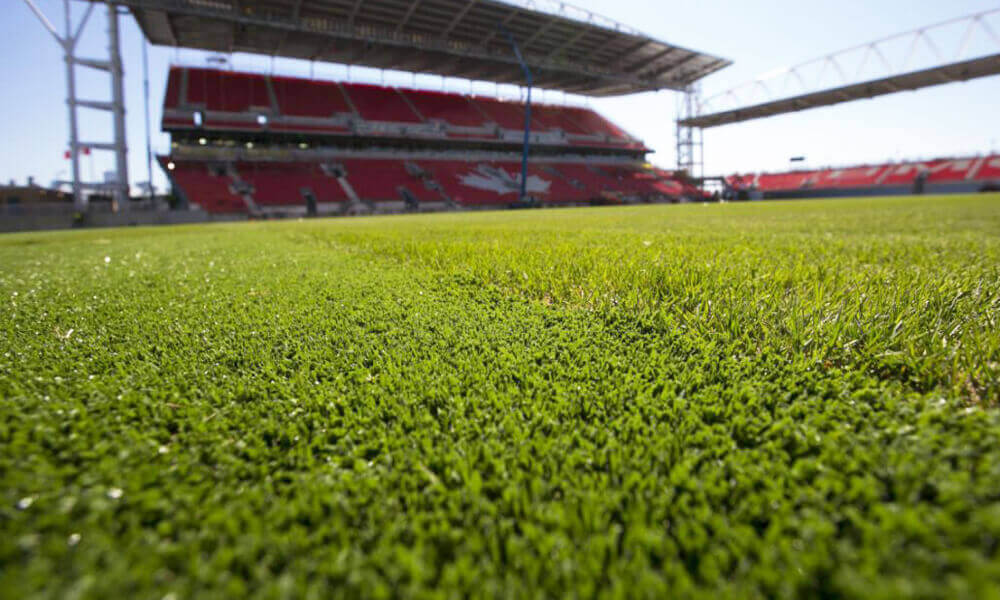Your budget isn’t the only thing to consider when you decide to cover your garden with artificial grass. Installing fake grass is nothing short of an investment, and if you want your turf to last long, making the right choice is necessary.
Don’t let this worry you; once you know about the different types of turfs, you’ll be able to take the right decision. Here are 7 things you should consider before buying your turf.
1. Traffic
The first thing to consider before making a purchase is the amount of traffic in the area you wish to install artificial grass on. If you have pets or kids who love playing outdoor games, you’ll have to install a turf that is highly durable.
Installing less durable turf in an area that sees heavy traffic will cause the turf to wear out quickly. So make your choice depending on how you’ll be using the turf-covered area in the future.
Note that choosing a highly durable turf will mean compromising on comfort. Nevertheless, quality turfs will usually have a soft and non-abrasive texture.
2. Quality
As mentioned, quality artificial turf will feel soft to the touch; go for polypropylene or polyamide turfs, or polyethylene yarns. In addition to this, quality turf will be evenly backed, and will have well-stitched tufts and a consistent color.
Quality turf will be more expensive than the others, but since this is going to be a long-term investment, you’ll be better off purchasing the best. Look for manufacturers or suppliers that have a range of products and compare turfs with each other to see what appeals to you.
If buying online, request samples so that you aren’t stuck with artificial grass that you don’t like. Keep in mind that turf samples might be too small in size and may not be able to give you an exact idea of the product. If you are in two minds, explain the problem to the supplier and request a larger sample to help you decide. Ensure that the grass is porous – there should be drainage holes in the backing
3. Pile Height
Pile height refers to the length of the grass blades from above the backing to the tip. Choosing turf that has a taller pile height may seem logical if you want a lush-looking lawn. However, longer grass blades will be heavier and due to the gravitational pull, will bend over themselves. Consequently, this will make your lawn look flat as time goes by.
To keep your lawn looking natural, go for a pile height of 15-40 mm. If you intend to place furniture on the turf, go for a shorter pile height as it will offer better sustainability.
Remember that brushing the turf regularly to keep the blades upright is a must, irrespective of the pile height you choose.
4. Density and Weight
Turf density is the measurement of the amount of fiber or yarn per square unit of the turf. A dense turf will have more yarn content and hence, will be more expensive.
Dense turfs provide aesthetic appeal to the lawn and are also more durable in heavy traffic areas. If you can’t afford a dense turf, don’t worry; longevity and performance of turfs with lesser density can be improved with sand infill.
Furthermore, turf that is dense and has a taller pile height will be relatively heavier. The weight of the turf isn’t something you should take into account when getting it installed in your garden or backyard. But if you’re planning to install turf in your balcony or on the rooftop, you’ll have to consider your balcony’s or roof’s load limit.
5. Infill and Backing
Artificial grass is designed to be infilled to keep it looking lush. Infill also helps keep the turf springy. Rubber crumb and sand are popular infill materials and you can choose either for your turf depending on your preference and budget.
Artificial grass has a backing that is either polyurethane or latex. The former doesn’t contract or expand while the latter can shrink or expand by 5-10 mm. As such, polyurethane backing will be a better choice in areas that experience extreme weather changes.
6. Color
Synthetic grass comes in various shades of green- olive green, lime green, darker green, and more. Cheaper turfs come in single flat green shades and you can easily tell them apart from natural grass.
Stay away from turfs that are too perfectly green- go for the imperfect and pick a turf that has different shades of green along with some brown flecks too. While you can choose a turf of any color depending on your personal preference, do take samples outside and see which one looks great in the sun and will complement your house.
7. Maintenance
Artificial grass requires less maintenance than natural grass. However, maintaining artificial grass will increase its longevity and keep it looking great for years to come. All turfs need to be cared for more or less the same way; some will need more frequent care than others.
Choose a turf depending on the amount of time you can put in to maintain it. Take the weather conditions in your area into consideration too- falling debris from trees or other sources will mean more maintenance!
Don’t forget maintenance costs- if a cheaper turf requires you to spend more money on regular maintenance, you should rather purchase the costlier turf that won’t require you to spend or do much to keep it looking amazing.
Conclusion
Artificial grass can be a life-saver for those wanting a beautiful lawn with minimum maintenance. But installing fake grass is expensive so it’s advisable to choose your turf wisely!
With the information provided here, you now know what you need to consider before buying artificial grass. So don’t wait any longer; take the right decision and get the lawn of your dreams!

